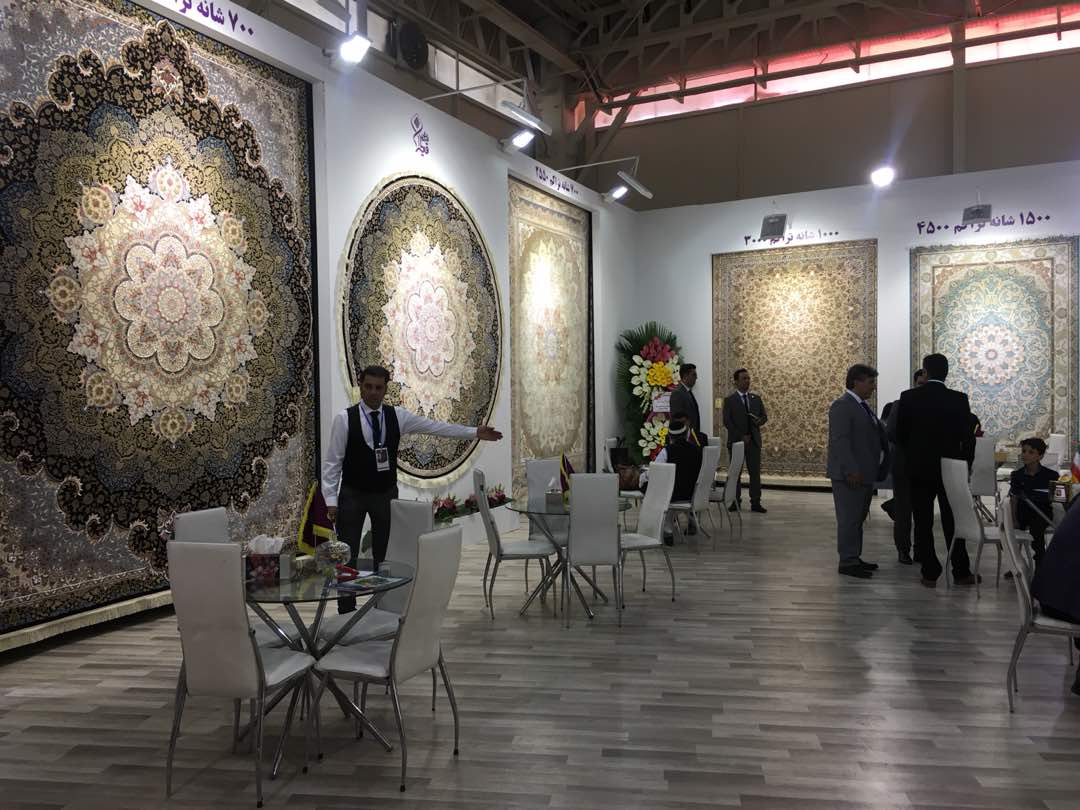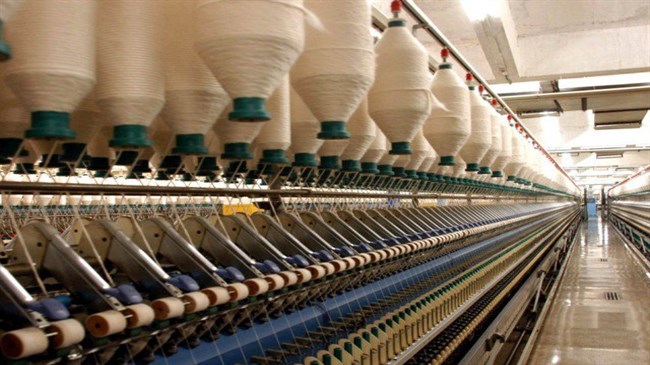An unemployment rate of over 12%, inflation at 36.9%, government debt of almost 40% of GDP, a GDP that could fall by 3% in the coming year, a free-falling currency, GDP per capita of US$ 6946.86. And crippling economic sanctions. That’s Iran.
With a population of around 80 million, with more than half under 35 years of age, and a literacy rate of over 80%, the country has favourable demographics. And were it not for the US sanctions, the country would have experienced strong economic growth.
However, today, unemployment is rising, purchasing power has fallen significantly. The government has banned imports of as many as 1300 products including textiles and apparel, leather and footwear, furniture, some machinery, to push domestic production in a bid create employment, self-sufficiency, conserve foreign exchange, and move back towards a `resistance economy’. Iran’s development plan Vision 2025 has identified textile and clothing as one of the potential industries for expansion.
The plan basically emphasises the need for technological advancements and improvement in productivity.

Iran bans textile, apparel imports, crackdown on smuggled apparel to begin from January
While Iran’s apparel imports are to the tune of US$ 59 million, the grey market accounts for imports worth US$ 3 billion. Iran’s Headquarters to Fight Smuggling of Goods and Foreign Currency has announced in a statement that from the beginning of January they will combat the supply of smuggled apparel in order to support the domestic production of clothing. “From the beginning of January, the supply of foreign branded clothing will be prohibited, except for the foreign clothing brands that have official representative branches in Iran,” the Headquarters said in a statement.
With a near total ban on apparel imports, the country will need around 210,000 tonnes of garments per year for domestic consumption. The country’s apparel market is valued at US$ 11 billion. The government hopes that domestic production will pick up to meet this demand. At present, Iran’s domestic industry meets less than 30% of the local demand. The industry employs 300,000 people, and employment could go up to 1 million. However, in the current situation, job losses are more likely. Industry fears that as many as 200,000 jobs could be curtailed. This shows the severity of the problem.
Iran’s textile exports rise 28%
Iran’s textile and clothing exports have grown 28% from March 21 to October 21, 2018. A weak rial helped boost exports, and brought in much-needed funds for the cash-strapped industry. There are 7,900 textile and apparel manufacturing units in Iran. The main export destinations were Afghanistan, Iraq, Turkmenistan, Tajikistan, Kyrgyzstan, Pakistan, the UAE, Turkey, Oman, Azerbaijan, Kuwait, Armenia, Georgia, Yemen, Germany, the Netherlands, Canada, the UK, Lebanon, India, Norway, Japan, Spain and Australia.
Bringing in transparency in forex market
Since going online in early July, Iran’s domestic Forex Management Integrated System (locally known as NIMA) has earned Euro 6.8 billion of foreign currency to be consumed for imports of goods and services into the country.
According to the public relations department of the Central Bank of Iran (CBI), textile, leather and apparel sector was supplied with Euro 113 million, for imports, at the secondary market NIMA.
NIMA seeks to boost transparency, create competitiveness among exchange shops and a secure environment for traders, is a new chance for importers to supply their required foreign currency without specific problems and for exporters to re-inject their earned foreign currency to the domestic forex market. It was inaugurated to allow exporters of non-oil commodities to sell their foreign currency earnings to importers of consumer products.
In mid-November, CBI issued the instructions on return details of the hard currency earned by exporters back to the domestic financial system. The instructions aimed to lead the export revenues from the non-oil exports back into the country’s economy through NIMA, mandate all the exporters of goods and services to guarantee to bring back to the country the foreign currency amount allocated to them by the government at lower prices than the free market.

Textile industry amid modernising
Iran’s textile and apparel industry is in need of modernisation, and had begun importing machinery. In the first nine months of 2017, Iran had imported textile and apparel production machinery worth US$ 347 million. In 2016-17, machinery imports stood at US$ 194 million.
Imports could slow down now due to economic sanctions.
The heartening news is that European machinery suppliers remain interested in this market, which was evident during the recently concluded Irantex textile exhibition. At Irantex, global textile machinery suppliers flocked to a market which needs support. A significant number of Italian machinery manufacturers were present at the show.
“Despite the concern for the restoration of international sanctions against the country, Iran remains a market of absolute importance for Italian textile machinery manufacturers,” commented Alessandro Zucchi, President of ACIMIT.
Italian Textile Machinery Exports to Iran (million euro – change y/y)
“Irantex is a further opportunity to strengthen the links between the Iranian textiles industry and Italian technology suppliers. Indeed, the Italian textile machinery offer is already well-known by Iranian textiles companies. The value of Italian sales in 2017 – equal to Euro 45 million – is proof of this. In 2018 the first half the Italian exports to the Iranian market totalled a value of Euro 15 million.”

Raw material constraints
China is one of the countries that stand against US sanctions on Iran. However, it was also the first country to stop the supply of textile raw materials to Iran, at a time when it needed it the most. Before the sanctions, Iranian industry was importing major textile raw materials from China through the Kunlun Bank of China, but soon after the imposition of sanctions, the raw material supply from China stopped.
Iran’s handmade carpet exports decline 20% in 7 months
Handmade carpets are an important non-oil export for Iran. US sanctions have directly impacted exports of rugs as the US was the single largest market for Iranian floor coverings, accounting for 35% of Iran’s carpet exports.
Iran exported US$ 176 million worth of hand-woven carpets during the first seven months of the current Iranian year (March 21-Oct. 22), which shows a 20% fall compared with the corresponding period of last year. According to the Islamic Republic of Iran Customs Administration, Iran’s handmade carpet exports stood at 5,400 tons worth US$ 424 million in the last fiscal year ended on March 20, 2018.
Some 2.5 million people in Iran are engaged in the carpet industry. About 80% of hand-woven carpets produced in Iran are exported annually. The United States, Germany, Lebanon, Britain and China are the biggest customers of Iran. Italy, Switzerland, the UAE, Kuwait and Qatar are other traditional buyers of Iranian carpets.
Iran will now have to look for new markets, especially in Russia, China and South Africa, to replace the US demand.
Another option the carpet industry is looking at is third country exports to the US, to circumvent the sanctions. This will, however, mean that they cannot be labelled as Iranian handmade carpets, and will lose brand value and price.
Moreover, US customs is vigilant to stop such exports, said, Iranian industry leaders. Iran’s carpet exports have fallen about US$ 100 million since the sanctions took effect, which affected 6 million Iranians, who depend on selling carpets for a living. India and Pakistan will now enjoy a bigger market for their handmade rugs in the US.

Iran’s per capita clothing consumption will fall further
Clothing’s share was 4.5% in Iranian families’ spending in fiscal 2015-16. But with the uncertain conditions prevailing at present, this share is expected to go down t0 1.5-2%, also because new imported clothing will be difficult to come by.
This will keep Iran’s per capita apparel consumption lower than the global average. With the aim of limiting imports, boosting domestic production and making the price of Iranian clothing more competitive, the government has begun work on setting up a new apparel industrial town. The hope is that such an apparel industrial park will be highly beneficial as it will lead to a transfer of know-how, increase in quality and lowered production costs.
The country has mandated foreign representatives, branches and distributors of apparel in Iran who seek business licenses to produce goods worth 20% of their import value inside Iran and to export at least 50% of this domestic production. The initiative is aimed at increasing domestic production, creating jobs and reviving Iran’s ageing apparel industry.
An apparel industrial park is also being set up in Iran. The industrial park will come up near Imam Khomeini International Airport in Tehran and will be spread over an area of 190 hectares. It will be extendable to 300 hectares.
The first phase of the park has already been designed and the development has started for the second phase. It will have around 300 apparel manufacturing units in addition to other service providers like hotels, design centres and training institutes. The park would have attracted foreign investment and participation. But many foreign companies have now left Iran. Investors from countries like China, Italy, Turkey and South Korea had shown their interest in the ongoing project.
The park and other textile infrastructure are much needed now, but further funds to complete the projects may be hard to come by. Meanwhile, the industry will again be faced with higher import costs for raw materials, through third countries like Dubai. Currently, Iran is heavily dependent on imports of textile raw materials especially manmade fibre textiles and cellulose fibres.
With foreign exchange being a constraint for imports, the government has made substantial investments in setting up production facilities for synthetic fibres. Of course, Iran will trade in local currencies for its requirements, and with past experience of economic sanctions, supply chain networks are already in place.

Gravitating East
More than ever, for Iran, moving east is a sustainable plan. As we had mentioned earlier, current US policies will push countries to move supply chains to the world’s larger markets – China, India, Russia.
And once again, this brings China’s Belt And Road Initiative (BRI) into focus, more so as China, to needs this infrastructure urgently to ensure economic development, regional integration and economic and political stability.
In the current situation, China’s RMB will be further internationalized, Chinese investors will move in where European and US companies vacate oil space in Iran. Tehran’s shops are already flooded with Chinese products and its streets clogged with Chinese cars. For China, Iran is at the crossroads for Central Asia, the Middle East and Europe. Iran is at the centre of everything, says Chinese businessman Zuoru Lin, who has set up factories along what will be a key part of the One Belt, One Road trade route.
Lin established his factories along what will be a key part of the trade route – a 575-mile electrified rail line linking Tehran and Mashhad, financed with a US$ 1.6 billion loan from China. When completed and attached to the wider network, the new line will enable Lin to export his goods as far as northern Europe, Poland and Russia, at much less cost than today.
“I am expecting a 50% increase in revenue,” Lin said. In a 2016 test, China and Iran drove a train from the port of Shanghai in eastern China to Tehran in just 12 days, a journey that takes 30 days by sea. When the new line is opened in 2021, it is expected to accommodate electric trains at speeds up to 125 miles an hour.























